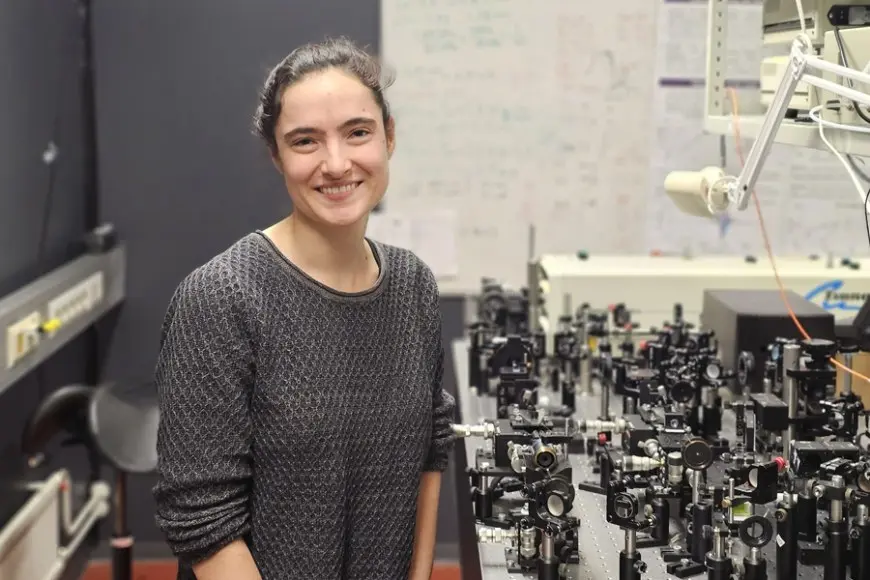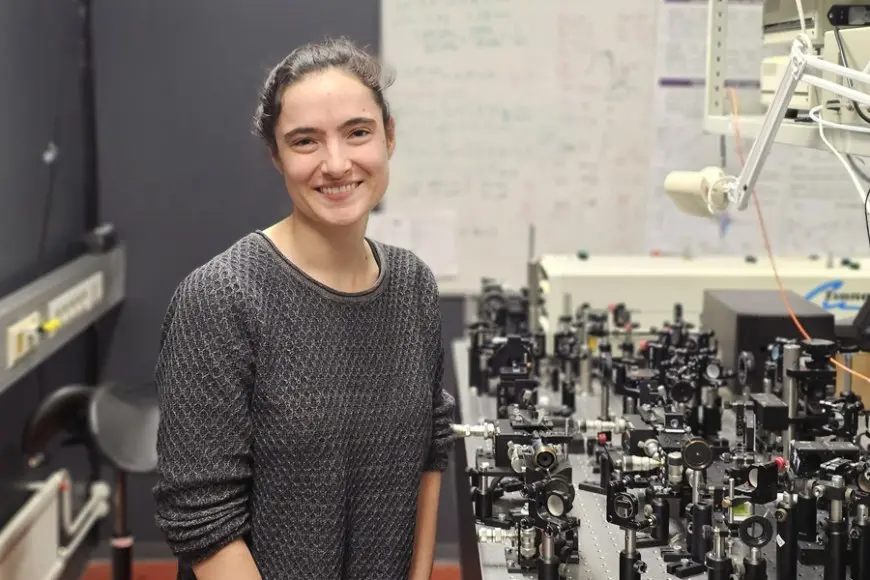
In her doctoral dissertation, Lea Kopf explores light’s three key properties — wavelength, space, and polarization — known as light’s degrees of freedom (DoFs). By studying correlations in these DoFs for both classical and quantum light, she uncovers new insights into light’s fundamental principles and paves the way for future applications and studies.
In her thesis, Lea Kopf presents a series of experimental studies that investigate different correlations in various DoFs of classical light as well as their quantum mechanical counterpart, i.e. correlations between multiple photons.
In a first step, Lea Kopf has established a novel scheme to generate laser pulses in which wavelength and polarization are strongly linked. She shows that these so-called spectral vector beams and their correlation between wavelength and polarization can be leveraged for high-speed spectroscopic measurements using only polarization analysis, which is simpler, cheaper, and faster than conventional methods.
This method is extended to include the spatial domain, thereby generating spatio-spectral vector beams, that link all three DoFs in a single pulse of light. These beams unveil their structures in wavelength, space, and polarization only when measured in correlation. Otherwise, they appear to have no structure resulting in an incoherent light field which is atypical for lasers. This behavior is similar to a phenomenon typically associated with quantum entanglement.
In addition to its classical optical insights, Lea Kopf also explores correlations in the quantum optical domain. Specifically, it explores the fundamental conservation laws behind the correlations of twin photons generated with a nonlinear crystal. The research successfully demonstrates the conservation of orbital angular momentum in these photon pairs, providing an experimental verification of fundamental conservation laws also for individual quantum systems.
“The experimental setup that was built during these studies also shows that it will be possible to generate three photons entangled in high dimensions in the future”, explains Lea Kopf.
This thesis sets the stage for exciting future developments profiting from the ability to control and manipulate multiple DoFs of light.
“This work not only enhances our understanding of light’s intricate behavior but also provides valuable tools for future studies and technologies in both the classical and quantum mechanical domains”, concludes Lea Kopf.
Lea Kopf is originally from Germany and has been working as a researcher in the Experimental Quantum Optics group at Tampere University.
